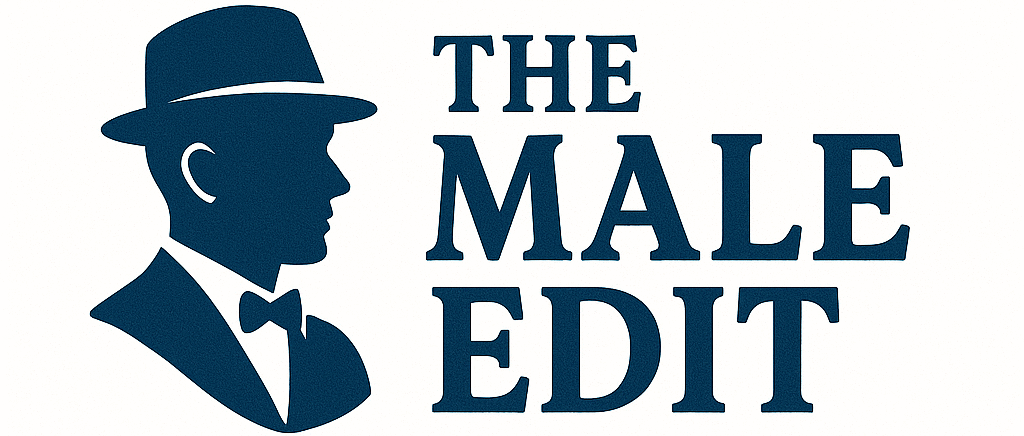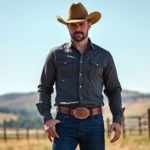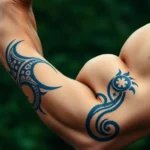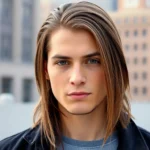Finding the perfect beard style isn’t just about following trends – it’s about understanding your unique face shape and choosing a look that enhances your best features. We’ve all seen guys with amazing beards that seem tailor-made for their faces while others struggle to find a style that works.
The secret lies in matching your facial structure with the right beard shape. Whether you’ve got a round face that needs lengthening or a square jaw that could use some softening we’ll help you discover which styles work best for your exact features.
Your face shape determines everything from the ideal beard length to the perfect neckline placement. We’re breaking down the most flattering beard styles for every face type so you can finally achieve that polished confident look you’ve been after. Ready to transform your facial hair game?
Understanding Your Face Shape Before Choosing a Beard Style
Choosing the perfect beard style starts with recognizing your unique facial structure. We’ll guide you through identifying your face shape and understanding how it influences your ideal beard selection.
Identifying Your Face Shape Type
Oval faces feature balanced proportions with slightly wider cheekbones than the forehead and jawline. Pull your hair back and look straight into a mirror to see if your face length is about 1.5 times your face width.
Round faces display equal width and length measurements with soft, curved edges. Check if your cheekbones are the widest part of your face and your chin appears rounded rather than angular.
Square faces showcase strong, angular jawlines with similar width measurements across the forehead, cheekbones, and jaw. Notice if your face appears as wide as it is long with prominent jaw angles.
Heart shaped faces present wider foreheads that taper down to narrower chins. Look for broad temples and cheekbones that gradually decrease toward a pointed or narrow chin area.
Diamond faces exhibit narrow foreheads and chins with wide cheekbones as the dominant feature. Observe if your cheekbones are significantly wider than both your forehead and jawline.
Oblong faces appear longer than they are wide with relatively straight sides. Measure if your face length exceeds your width by a noticeable margin while maintaining fairly uniform width from forehead to jaw.
Why Face Shape Matters for Beard Selection
Facial proportions determine which beard styles create visual balance versus those that emphasize unwanted features. We choose beard shapes that complement rather than compete with our natural bone structure.
Jawline enhancement becomes possible when we select beard styles that add definition to weak jaws or soften overly strong ones. Strategic beard placement can create the illusion of a more masculine or balanced jawline.
Visual lengthening or widening effects occur when we use exact beard techniques to alter perceived face dimensions. Fuller beards add width to narrow faces while vertical lines create length for rounder faces.
Professional appearance improves when our beard style harmonizes with our facial features rather than fighting against them. Well matched combinations create polished looks that enhance our overall attractiveness and confidence.
Maintenance requirements vary significantly based on the beard styles that work best for different face shapes. Understanding our optimal styles helps us invest time in techniques that deliver maximum visual impact.
Best Beard Styles for Round Face Shapes

We’ve found that men with round faces need beard styles that create angles and enhance facial definition rather than emphasizing their face’s natural curves.
Angular Beard Styles to Add Definition
Balbo beards combine a mustache with a chin strap design that helps elongate your face shape. This style creates clean lines along your jawline while maintaining a sophisticated appearance that works well for professional settings.
Square beards feature shorter hair on the sides with fuller growth at the bottom to define your jawline effectively. The geometric shape adds structure to round faces by creating the illusion of a more angular bone structure.
Anchor beards merge a mustache with beard hair along the jawline to add a rugged touch to your overall look. This combination creates visual interest while drawing attention downward to lengthen your face’s appearance.
Van Dyke beards showcase a mustache paired with a chin strap for an angular and timeless aesthetic. The separated sections create distinct lines that break up the roundness of your face shape naturally.
Goatee and Van Dyke Options
Goatees focus hair growth on the chin area to help slim round faces when paired with a well-trimmed mustache. This concentrated approach draws the eye to the center of your face while creating vertical lines that elongate your appearance.
Van Dyke styles separate the mustache from the chin strap completely for maximum angularity. The classic design adds sophistication to your look while creating distinct geometric shapes that counteract facial roundness.
Modified goatees extend slightly along the jawline to provide more definition than traditional goatee styles. These variations offer flexibility in styling while maintaining the slimming effect that benefits round face shapes.
Avoiding Styles That Emphasize Roundness
Full beards with rounded edges can accentuate your face’s natural curves instead of creating the angular definition you need. We recommend avoiding these styles as they tend to make round faces appear wider and less structured.
Circular beard shapes mirror your face’s roundness and create an unbalanced appearance that lacks visual interest. These styles fail to provide the contrast needed to enhance your facial features effectively.
Overly bushy styles without proper trimming and shaping can overwhelm round faces and eliminate natural definition. Instead, focus on styles that create angles along your jawline and cheekbones for optimal results.
Ideal Beard Styles for Square Face Shapes
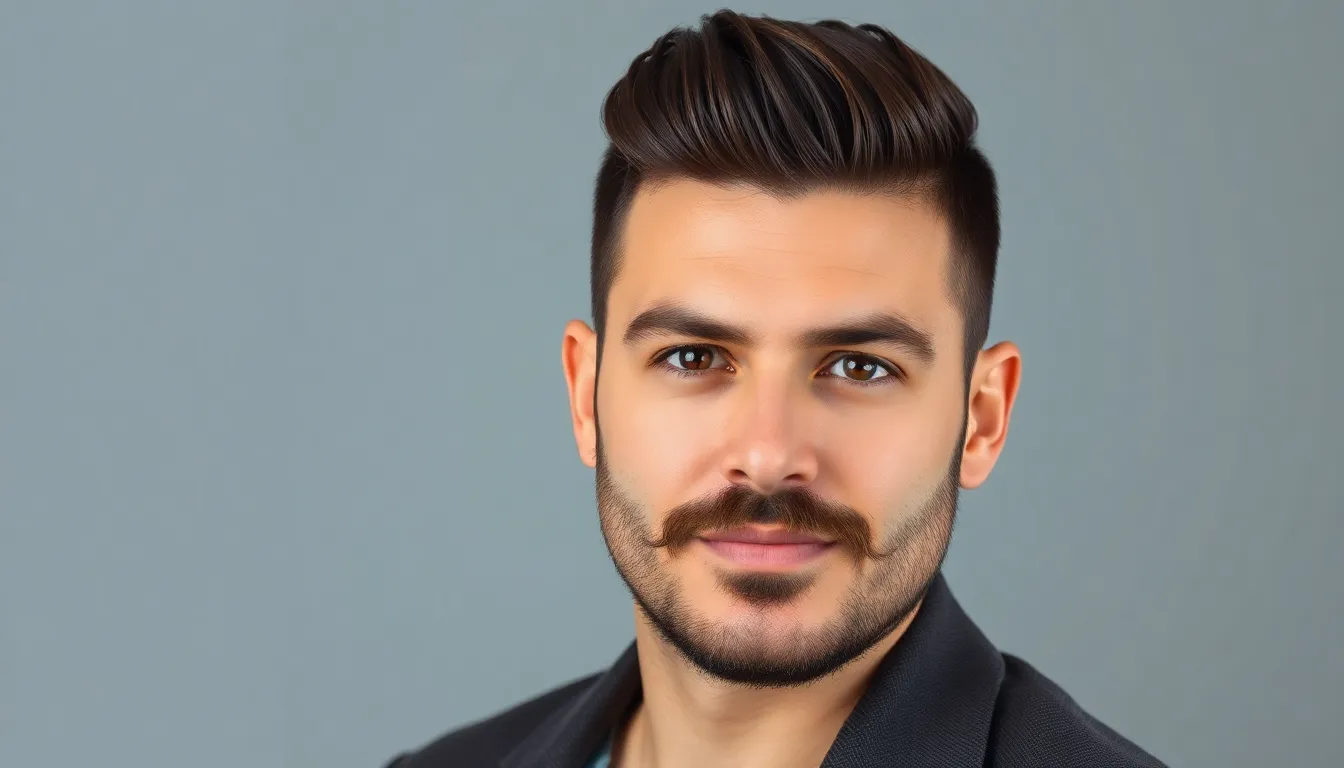
Square face shapes feature strong jawlines and defined angles that we can enhance or soften depending on your style preferences. Our recommended beard styles work to balance these angular features while maintaining that masculine edge.
Softening Sharp Jawlines With Rounded Beards
Rounded beard styles create the perfect counterbalance to sharp facial angles. Extended goatees add length to your face while drawing attention downward from the strong jawline. Van Dyke beards provide similar benefits by creating a balanced look that complements rather than competes with your natural bone structure.
Circle beards work exceptionally well for square faces because they accentuate your cheekbones while adding volume to the chin area. These styles create visual interest without overwhelming your features or making your face appear too wide.
Full Beard Variations for Square Faces
Full beards require careful consideration for square face shapes to avoid creating a one dimensional appearance. Short boxed beards frame your jawline beautifully while maintaining clean sharp edges that complement your natural angles. This style covers just enough area to add sophistication without hiding your best features.
Light to heavy stubble options create dimensionality across your face without completely covering the jawline. These variations allow your bone structure to shine through while adding texture and depth to your overall look.
Mustache and Beard Combinations
Strategic mustache and beard pairings enhance square faces by creating balanced proportions. Chevron mustaches offer a bold classic approach that pairs seamlessly with most beard styles while adding weight to your upper lip area.
Handlebar mustaches bring fun personality to your look while adding visual length to counteract the width of square faces. Goatees combined with mustaches create an elongating effect that slims your face and draws attention to your chin area.
Balbo beards focus attention on the chin while avoiding extra width across your cheeks and jaw. Pencil mustaches work well when paired thoughtfully but require careful grooming to prevent your face from appearing top heavy.
Perfect Beard Styles for Oval Face Shapes
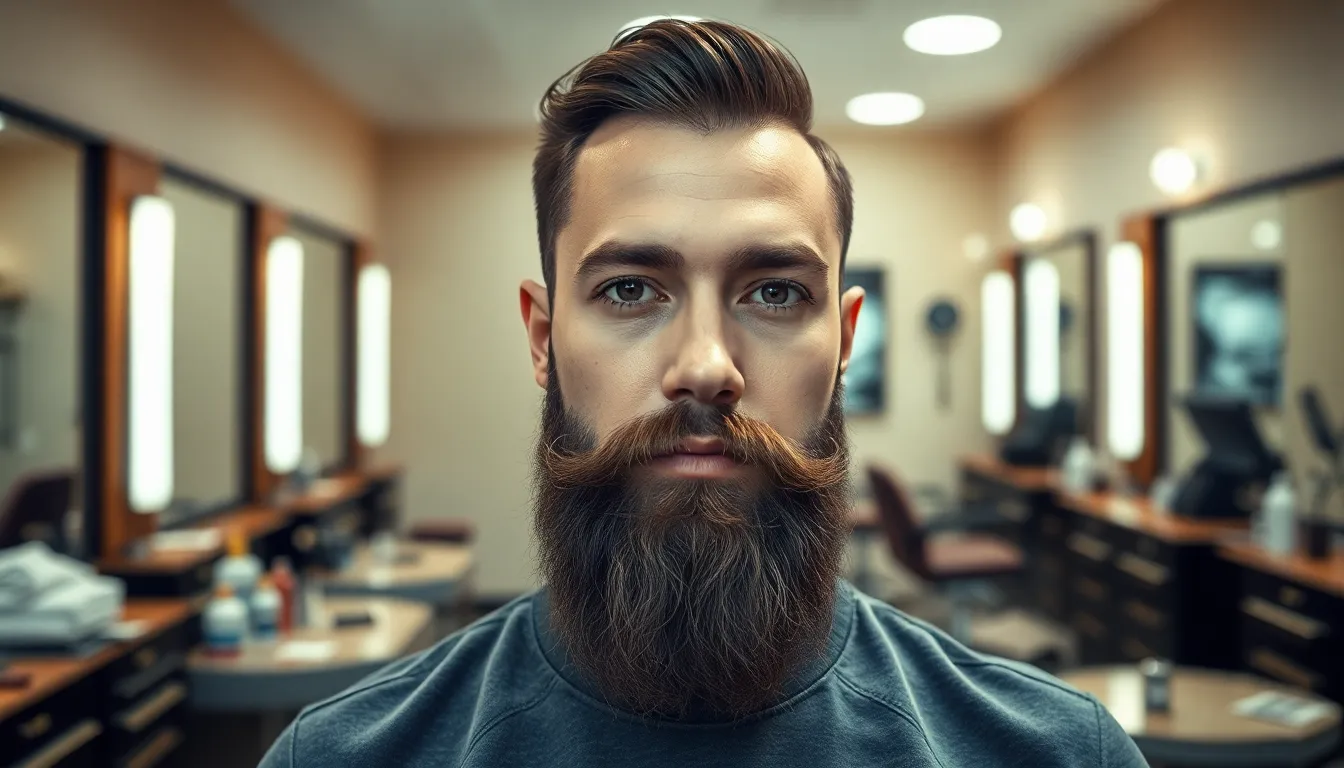
Men with oval face shapes have won the genetic lottery when it comes to facial hair versatility. We’ll explore why this balanced face shape opens up endless possibilities for beard styling.
Most Versatile Face Shape for Beard Styles
Oval faces are characterized by balanced proportions, with the face being longer than it’s wide and the forehead serving as the widest part. We consider this the most versatile face shape because it naturally complements nearly any beard style without overwhelming facial features.
Key advantages of oval face shapes include:
- Balanced proportions that work with both minimal and dramatic beard styles
- Rounded chin that pairs well with goatees like the classic chin curtain
- Little jaw definition that benefits from structured styles like the short boxed beard
- Natural symmetry that allows for experimentation with mustache combinations
Men with oval faces can confidently try everything from soul patches to full beards, making this face shape ideal for both conservative and bold looks.
Classic Full Beard Options
Full beards work exceptionally well on oval faces because the natural facial balance prevents the beard from dominating your features. We recommend these traditional approaches for maximum impact.
Top full beard variations for oval faces:
| Style | Length | Maintenance | Best For |
|---|---|---|---|
| Corporate Beard | Short (0.5-1 inch) | Daily trimming | Professional settings |
| Traditional Full Beard | Any length | Weekly grooming | Casual to formal occasions |
| Short Boxed Beard | Well-defined edges | Regular shaping | Business appropriate |
Corporate beards offer the perfect balance between professionalism and masculinity, requiring about half an inch to an inch of growth with clean, defined edges. Traditional full beards can be grown to any length as long as they’re kept tidy and groomed regularly.
Experimental Styles That Work
Oval face shapes give us the freedom to explore creative beard combinations that might overwhelm other face types. We’ve identified several modern styles that showcase this versatility.
Bold experimental options include:
- Beardstache: Combines stubble beard with a prominent mustache for a contemporary twist
- Verdi Beard: Features a soft, rounded mustache paired with medium length beard for classic polish
- Winnfield: Showcases a mustache and chin beard combination, often disconnected for dramatic effect
- Chevron Mustache: Works solo or with minimal facial hair to emphasize the upper lip
- Horseshoe Mustache: Creates a distinctive look that complements oval proportions
These experimental styles work because oval faces provide the ideal canvas for creative expression without disrupting natural facial harmony. We encourage trying multiple combinations to discover your signature look.
Flattering Beard Styles for Oblong Face Shapes

Men with oblong face shapes need beard styles that create horizontal width while minimizing vertical length. We recommend selecting styles that balance facial proportions by making the face appear wider and less elongated.
Adding Width With Horizontal Beard Lines
Emphasizing horizontal lines through your beard design creates the visual width that oblong faces need most. We suggest using angular cheek lines paired with squared-off or rounded bottoms to counteract your face’s natural elongation. Keeping the cheeks and jawline fuller while trimming the chin area short achieves this balancing effect perfectly.
Short boxed beards work exceptionally well because they provide structure with their trimmed, squared-off bottoms. This style creates the illusion of a wider jawline while adding masculine definition to your lower face. Full beards also suit oblong faces when you keep the sides fuller and maintain a shorter chin area with rounded or squared-off bottoms.
Strategic trimming ensures your beard emphasizes width rather than length. We recommend focusing on creating robust, horizontal lines that visually widen the lower third of your face for optimal balance.
Chin Curtain and Mutton Chops
Chin curtain styles generally don’t complement oblong faces because they follow the jawline without hair beneath the chin, emphasizing facial length. We advise avoiding this traditional style since it accentuates the very dimension you’re trying to minimize.
Mutton chops present a more complex styling challenge for elongated faces. While prominent sideburns can add desirable width, leaving the chin clean may accentuate your face’s verticality if not executed carefully. We suggest avoiding thick sideburns that leave the chin uncovered, as this creates an unbalanced appearance.
Connected mutton chops offer better results when you include a mustache and beard combination. This variation can add horizontal width effectively, provided you trim the bottom short rather than allowing it to extend downward.
Styles to Avoid for Elongated Faces
Long, full beards should be avoided entirely since they accentuate facial length rather than creating balance. We strongly recommend steering clear of goatees without mustaches, as these styles draw attention to the chin area and emphasize verticality.
Pointed or tapered beard styles prove particularly unflattering for oblong faces. Any style that adds important length at the chin works against your facial proportions. We advise avoiding designs that create downward visual lines or extend beyond your natural jawline.
| Style | Effect on Oblong Face | Recommendation |
|---|---|---|
| Short Boxed Beard | Adds width, shortens chin | Recommended |
| Full Beard (trimmed) | Adds width, shortens chin | Recommended |
| Chin Curtain | Emphasizes length | Not recommended |
| Mutton Chops | Adds width (if styled) | Use with caution |
| Long Full Beard | Elongates face | Not recommended |
| Goatee (no mustache) | Elongates face | Not recommended |
Regular trimming and professional shaping maintain the sharp, wide lines essential for flattering an oblong face. We recommend scheduling consistent maintenance appointments to prevent your beard from growing into unflattering proportions that elongate your facial structure.
Complementary Beard Styles for Triangle Face Shapes
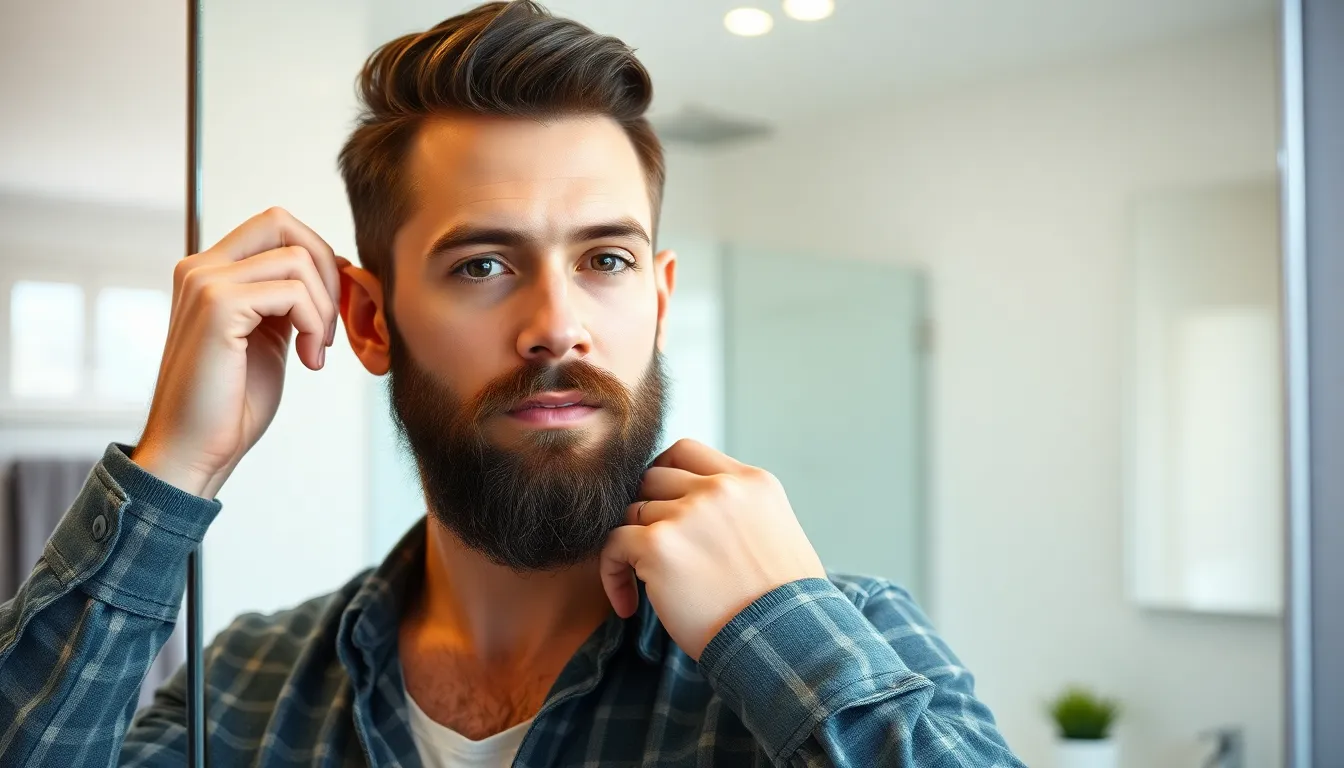
Triangle face shapes present unique styling opportunities that require strategic beard placement to achieve facial harmony. We recommend focusing on styles that add definition to the jawline while maintaining balanced proportions across the face.
Balancing Narrow Foreheads With Fuller Beards
Fuller beard styles create visual weight in the lower face area, effectively balancing narrower foreheads common in triangle face shapes. Short boxed beards add substantial width to the jawline without overwhelming facial features, making them ideal for achieving proportional balance. Full beards provide maximum coverage and volume, creating a more rectangular appearance that counteracts the narrow upper face structure.
Maintaining proper beard density becomes crucial when using fuller styles to balance triangle faces. We suggest keeping the beard well-groomed to prevent it from overpowering the upper facial features while still providing the necessary visual weight for proportion.
Chin Strap and Goatee Modifications
Extended goatees combined with chin straps create definition along the jawline while maintaining facial symmetry. This modification adds structure to the lower face without creating excessive bulk that might unbalance triangle proportions. Flat goatees offer another effective option by covering the chin and part of the jaw area, creating a more balanced overall appearance.
Angular beards with clean lines work exceptionally well for triangle faces, featuring shorter sides and longer chin areas that accentuate the jawline. These modifications provide definition while respecting the natural facial structure of triangle shapes.
Creating Upper Face Proportion
Circle beards focus attention on the center of the face, effectively softening strong jawlines while drawing the eye away from the narrow forehead area. This style creates visual balance by concentrating facial hair in the middle region of the face.
Full beards with rounded finishes soften the jawline by adding volume to the cheek area while rounding the beard edges. This approach helps create upper face proportion by adding width to the mid-face region, complementing the narrower forehead typical of triangle face shapes. We recommend maintaining proper grooming to ensure the beard doesn’t overpower the upper facial features while still providing the necessary balance for optimal proportions.
Suitable Beard Styles for Diamond Face Shapes
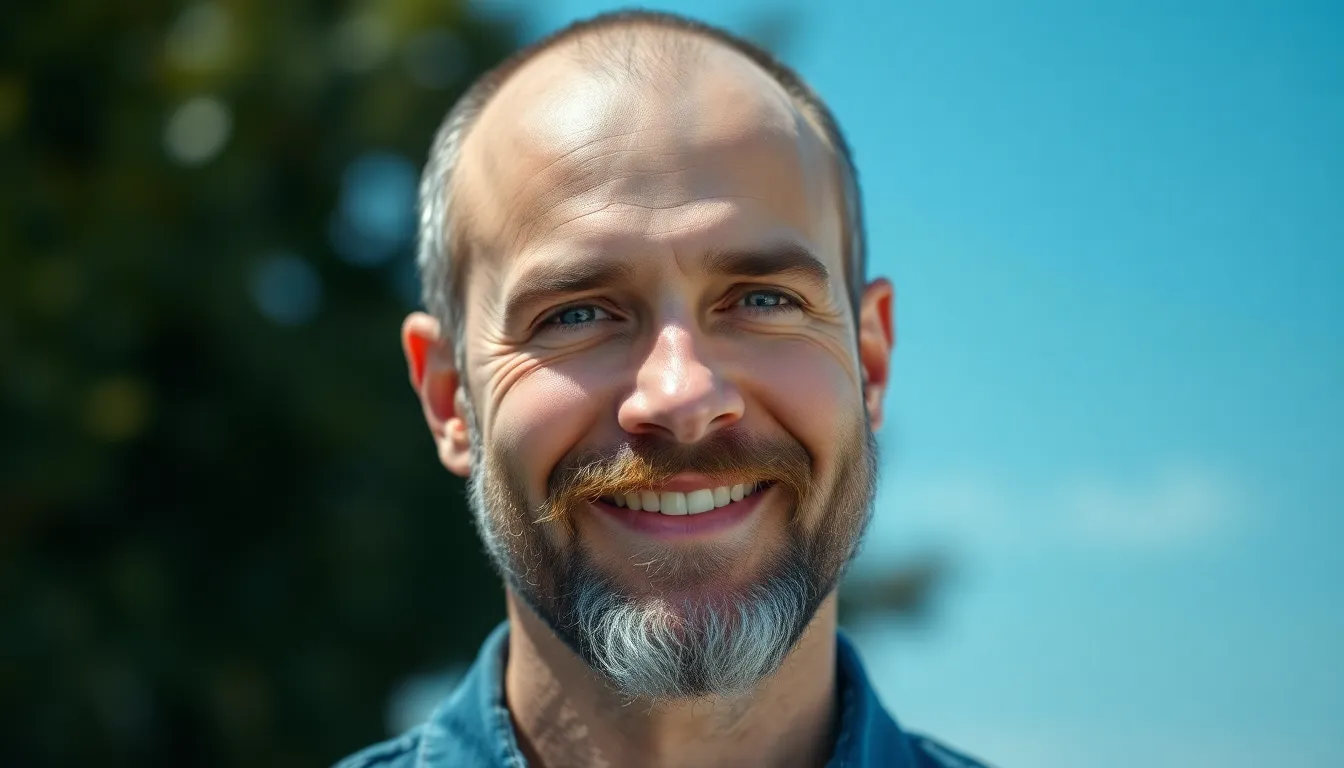
Diamond face shapes present unique styling opportunities with their wide cheekbones, narrow foreheads, and pointed chins. We recommend focusing on beard styles that add width to the lower face while balancing those prominent cheekbones.
Emphasizing the Chin Area
Adding visual weight to your chin creates the foundation for balancing a diamond face shape. Goatee styles work exceptionally well because they concentrate hair growth directly on the chin, creating the illusion of a fuller, more substantial jawline. Short boxed beards extend this concept by adding width across the entire lower face while maintaining focus on the chin area.
Full beards offer another excellent approach for diamond faces, as they soften sharp angles and expand the jawline significantly. These styles compensate for the naturally narrower lower portion of your face by creating visual balance with the broader cheekbone area. We’ve found that full beards with rounded edges work particularly well for drawing attention downward and away from the widest part of your face.
Chevron mustaches complement chin focused beard styles by adding thickness to the upper lip area. This bold mustache style covers the entire upper lip, creating visual weight that enhances facial symmetry while drawing attention to your mouth rather than your pointed chin.
Handlebar Mustache Combinations
Handlebar mustaches create horizontal emphasis that counterbalances the vertical elongation typical of diamond face shapes. The signature curled ends that twist upward add width to your face while creating visual interest across the middle section. This horizontal line helps offset the pointed chin and high cheekbones that define your face shape.
Pairing handlebar mustaches with short beards amplifies the balancing effect significantly. We recommend combining this mustache style with a goatee or short boxed beard to provide extra chin definition while maintaining the horizontal emphasis. This combination approach addresses both the narrow chin and the need for visual width across multiple facial zones.
Standalone handlebar mustaches work effectively for men who prefer minimal facial hair while still achieving facial balance. The dramatic horizontal curves create sufficient visual weight to counteract your face’s natural proportions without requiring additional beard growth.
Avoiding Styles That Narrow the Face Further
Pointed beard styles pose the greatest risk for diamond face shapes because they accentuate existing sharpness. Ducktail beards taper to a sharp point that mirrors your natural chin shape, creating unwanted emphasis on the narrowest part of your face. Van Dyke and anchor beard styles present similar challenges by drawing attention downward with their pointed formations.
Excessive cheek fading creates another common pitfall for diamond faces. Heavy fading or overly short sides exaggerate your cheekbone width while further narrowing the overall appearance of your face. We recommend maintaining fuller coverage on the sides to balance your proportions more effectively.
Chin curtain styles elongate your face vertically, which works against the goal of creating width and balance. These styles connect sideburns to chin hair while leaving the mustache area bare, creating a frame that emphasizes length rather than providing the horizontal emphasis your face shape needs.
Beard Styles for Heart-Shaped Faces
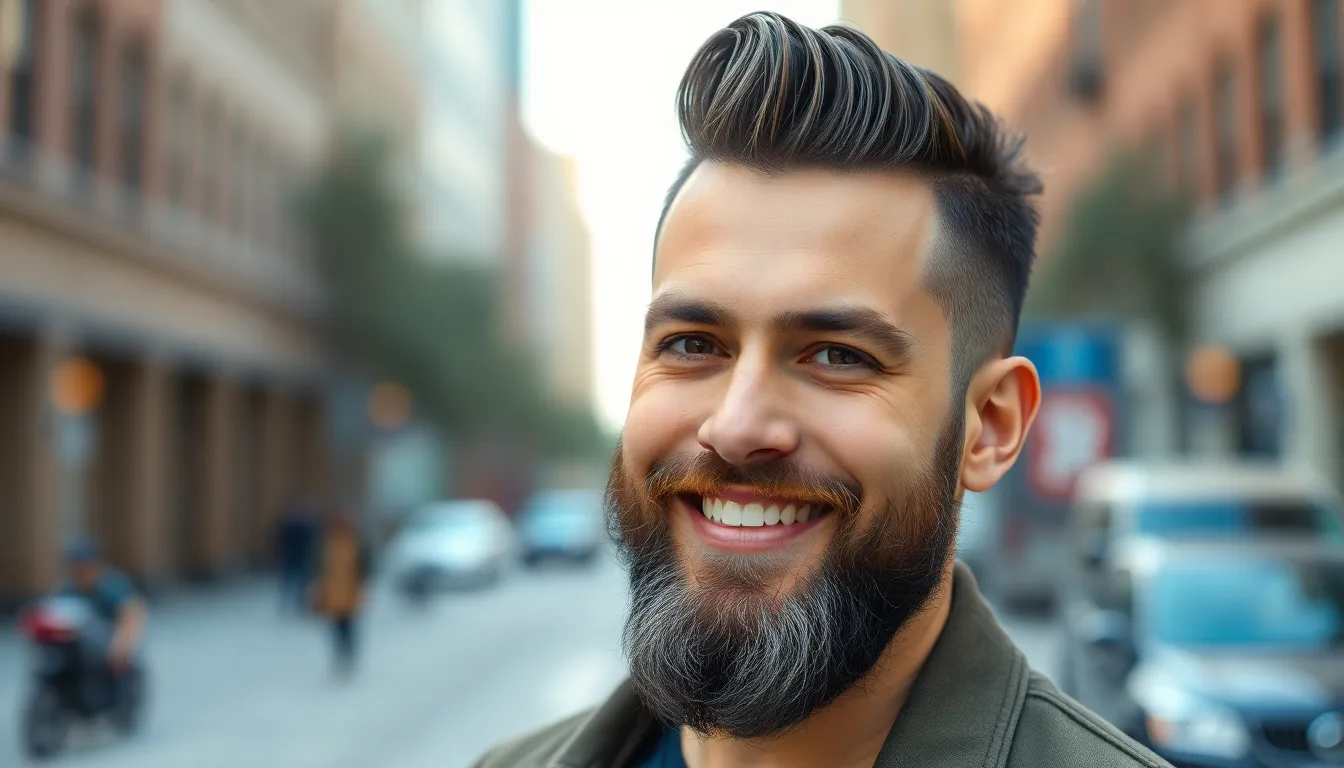
Men with heart-shaped faces possess wider foreheads and narrower, pointed chins that create distinct facial proportions. We recommend beard styles that add bulk to the chin area to achieve optimal facial balance.
Compensating for Wider Foreheads
Full beards serve as the ideal choice since they add important volume to the chin area while balancing wider foreheads naturally. Volume created by full beard growth helps distribute visual weight across the lower face effectively.
Garibaldi beards work exceptionally well if you have sufficient facial hair growth to support this fuller style. These beards feature rounded bottoms that create the perfect counterbalance to prominent forehead dimensions.
Beardstache combinations create visual width illusions across the middle portion of your face through strategic mustache and beard pairing. This dual approach helps redistribute facial proportions while maintaining masculine appeal.
Chin-Focused Beard Designs
Short beards and stubble add definition to the jawline without drawing excessive attention to pointed chin features. These styles provide subtle enhancement while avoiding overwhelming your natural facial structure.
Avoiding goatees and ducktails prevents accentuation of pointed chin characteristics that may not flatter heart-shaped face geometries. These styles concentrate hair growth in areas that emphasize rather than balance existing facial angles.
Strategic beard shaping focuses growth patterns on areas that need additional volume rather than highlighting naturally prominent features. Proper trimming techniques ensure your beard complements rather than competes with your facial structure.
Maintaining Facial Balance
Balanced beard distribution ensures hair growth doesn’t draw attention away from forehead width but rather creates harmonious facial proportions. We emphasize creating visual equilibrium between upper and lower facial regions.
Complementary hairstyle integration through side-swept fringes or textured quiffs works alongside your chosen beard style to enhance overall appearance. These hair combinations create cohesive looks that flatter heart-shaped facial geometries.
Regular maintenance schedules keep your beard properly shaped to maintain the delicate balance required for heart-shaped faces. Consistent grooming prevents your facial hair from overwhelming or undermining your natural features.
Professional Beard Grooming Tips by Face Shape
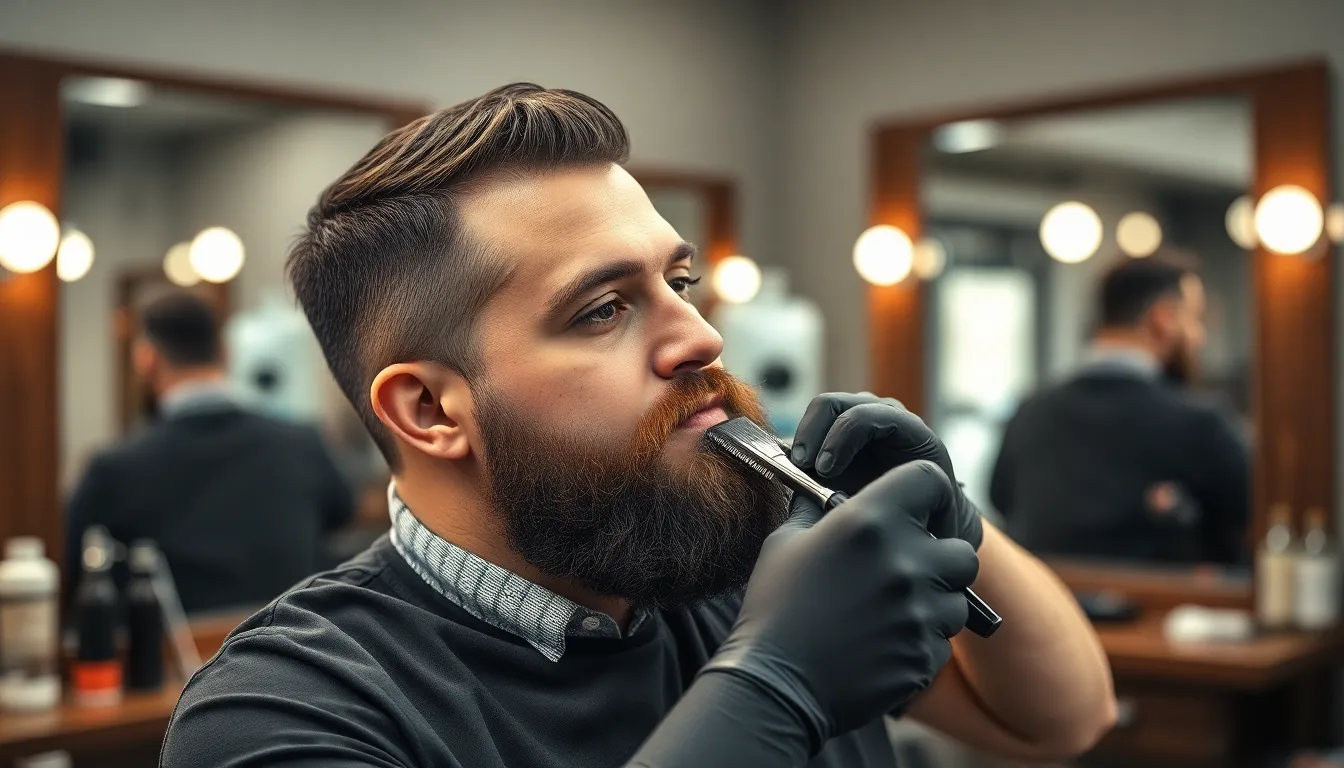
We’ll help you achieve the perfect beard by tailoring our grooming techniques to your unique facial structure. Proper grooming techniques ensure your chosen beard style enhances your face shape rather than detracting from it.
Trimming Techniques for Each Face Type
Oval faces benefit from uniform beard lengths that maintain balanced proportions and natural symmetry. We recommend experimenting with various trimming styles since most approaches work well with this versatile face shape.
Round faces require strategic trimming with shorter sides and increased chin length to create angular definition. Styles like Van Dyke or goatee work effectively by making the face appear slimmer and more structured while avoiding width additions to the cheeks.
Square faces need enhanced jawlines through shorter side trimming and fuller chin coverage. Sharp, precise lines near the cheekbones help accentuate your face’s natural angles and create visual balance.
Long or rectangular faces benefit from shorter bottom trimming and longer side coverage to add width and create facial balance. Avoid excessive length under the chin that can further elongate your face shape.
Essential trimming techniques include using clippers or trimmers with adjustable guards for precision control. Create clean lines along the cheekbones and neckline to define shape and structure throughout your beard. Blend transitions from shorter to longer areas for a natural, professional appearance. Regularly check for symmetry using a mirror from multiple angles to ensure balanced results.
Maintenance Schedules and Tools
Weekly maintenance involves washing and conditioning your beard every 2-3 days with specialized beard products designed for facial hair. Trim every 1-2 weeks to maintain your desired shape and remove split ends that can create an unkempt appearance.
Daily care routines require using a beard brush or comb to train hair growth patterns and distribute natural oils evenly. This daily practice helps maintain your beard’s shape between professional trimmings.
Essential tools for effective beard maintenance include a high-quality beard trimmer with multiple guard settings. Invest in sharp scissors for detail work around mustache areas and stray hairs. A quality beard brush or comb helps with daily styling and oil distribution. Beard oil or balm provides moisture and helps maintain healthy hair growth while adding subtle styling control.
When to Consult a Professional Barber
First-time style attempts warrant professional consultation when trying new or complex beard styles you haven’t attempted before. Barbers possess the expertise to execute intricate designs and ensure proper proportions for your face shape.
Symmetry struggles indicate it’s time to seek professional help if you’re having difficulty achieving balanced results or desired styling outcomes. Professional barbers can correct uneven areas and provide guidance for future maintenance.
Specialized maintenance requires professional attention for complex styles, fades, or structured lines that demand precision tools and expert techniques. Regular professional maintenance ensures your beard continues to enhance your facial features effectively.
Common Mistakes When Matching Beard Styles to Face Shape
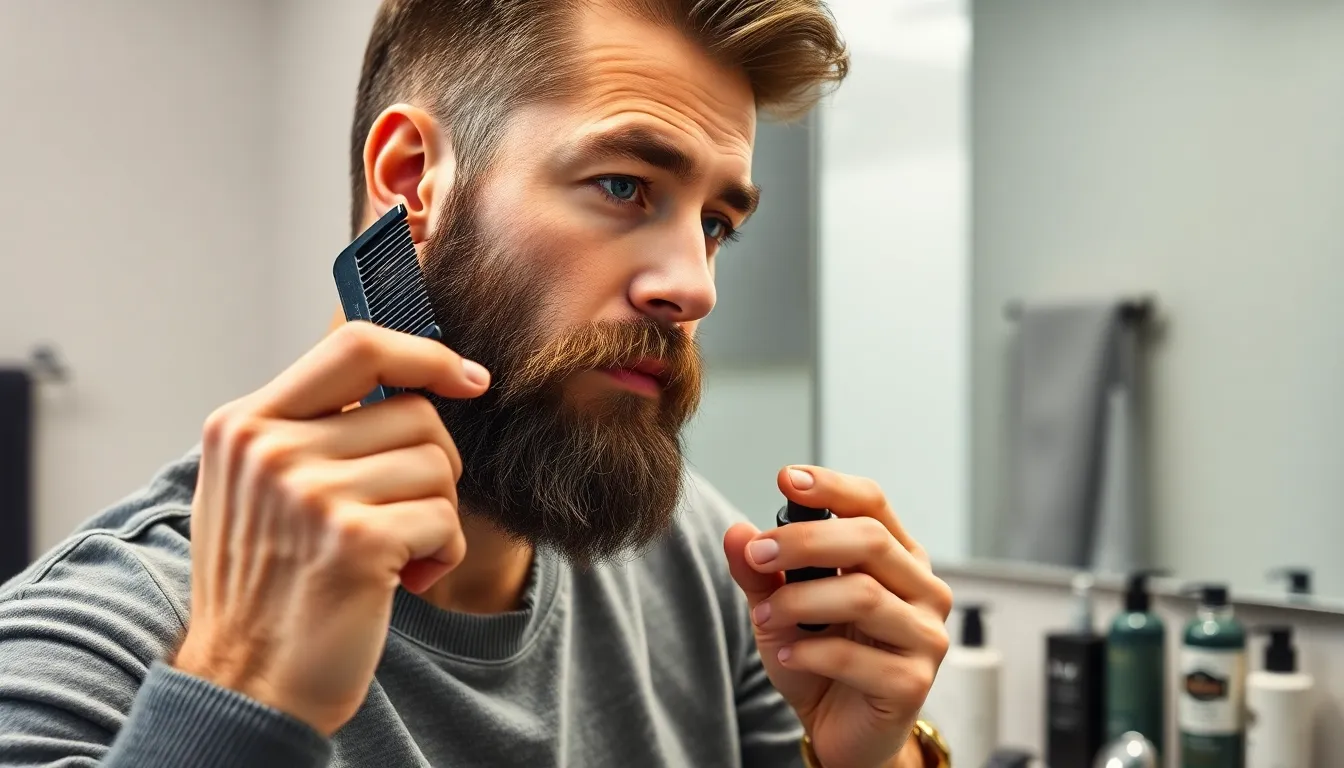
Even with proper face shape identification, many men still make critical errors that prevent them from achieving their ideal look. We’ve identified the most frequent mistakes that can undermine your beard styling efforts.
Ignoring Natural Growth Patterns
Working against your natural facial hair growth creates unnecessary challenges and often leads to disappointing results. Your beard grows in exact directions and densities that vary across different areas of your face, and fighting these patterns typically results in patchy, uneven coverage that’s difficult to maintain.
Men frequently choose beard styles they’ve seen on others without considering how their own growth patterns will affect the final appearance. Areas with sparse growth can’t support full coverage styles, while cowlicks and directional changes can disrupt clean lines in geometric beard shapes.
Consider your growth patterns when selecting styles, choosing options that work with rather than against your natural hair direction. Styles like the Van Dyke work well for men with strong chin growth but weaker cheek coverage, while full beards require consistent growth across the entire face.
Choosing Trends Over Suitability
Following popular beard trends without considering your face shape often results in styles that detract from your natural features rather than enhance them. We see men adopting trendy styles like hipster beards or lumberjack looks simply because they’re fashionable, regardless of whether these styles complement their facial structure.
Trending styles might work perfectly for certain face shapes while creating unflattering proportions for others. A pointed beard that looks sharp on a round face can make a diamond face appear overly angular, while a full rounded beard that softens square features might add unwanted width to an already round face.
Focus on styles that enhance your exact face shape rather than chasing current trends. Classic styles like the corporate beard or well groomed goatee remain popular because they work across multiple face shapes and professional environments.
Inadequate Grooming and Maintenance
Neglecting proper grooming transforms even the most suitable beard style into an unkempt mess that undermines your overall appearance. Many men invest time in selecting the right style but fail to maintain it with regular trimming, washing, and conditioning.
Poor maintenance shows up as uneven lengths, stray hairs extending beyond defined lines, and lack of shape definition that makes any beard style appear sloppy. Without consistent care, beards lose their intentional structure and begin to look accidental rather than purposeful.
Establish a regular grooming routine that includes weekly trimming, daily brushing, and proper cleansing with beard exact products. Professional touch ups every 4-6 weeks help maintain clean lines and proper proportions, especially for complex styles that require precise shaping.
Conclusion
Choosing the right beard style for your face shape isn’t just about following trends—it’s about understanding what works best for your unique features. We’ve explored how different face shapes benefit from exact beard styles and why proper grooming techniques make all the difference.
Remember that your natural growth patterns and lifestyle should guide your final decision. The most flattering beard style is one you can maintain consistently while feeling confident wearing it.
Take time to experiment with different lengths and shapes while keeping your face’s proportions in mind. With the right approach and regular maintenance your beard can become your most defining feature that enhances your natural attractiveness and personal style.
Frequently Asked Questions
How do I determine my face shape for choosing the right beard style?
To identify your face shape, measure your face width at the forehead, cheekbones, and jawline, plus the length from forehead to chin. Compare these measurements to determine if you have an oval, round, square, heart, diamond, oblong, or triangle face shape. Use a mirror and pull your hair back for the most accurate assessment.
What beard styles work best for round faces?
Angular beard styles work best for round faces as they create definition and elongate the face. Recommended styles include Balbo beards, square beards, anchor beards, Van Dyke beards, and goatees. Avoid full beards with rounded edges or overly bushy styles that emphasize the face’s natural roundness.
Can men with square faces wear full beards?
Yes, men with square faces can wear full beards, but they should opt for rounded variations like short boxed beards or extended goatees. These styles soften the strong jawline and defined angles. Light to heavy stubble also works well, maintaining sophistication without hiding facial features completely.
Why are oval faces considered the most versatile for beard styles?
Oval faces have balanced proportions with slightly wider cheekbones than the forehead and jawline. This natural symmetry allows men to experiment with both minimal styles like light stubble and dramatic options like full beards, Verdi beards, or beardstache combinations without overwhelming their facial structure.
What beard styles should oblong faces avoid?
Oblong faces should avoid chin curtain styles, long full beards, mutton chops, and traditional goatees, as these emphasize vertical length. Instead, choose styles that create horizontal width like short boxed beards or full beards with squared-off bottoms to counteract the face’s natural elongation.
How can triangle-shaped faces achieve better facial balance with beards?
Triangle faces benefit from fuller beard styles that add width to narrow foreheads and balance strong jawlines. Short boxed beards, chin strap modifications, circle beards, and full beards with rounded finishes work well. Focus on creating upper face proportion while maintaining symmetry through proper grooming.
What’s the best approach for diamond face shapes when choosing a beard?
Diamond faces should choose styles that add width to the lower face and soften sharp angles. Goatees, short boxed beards, and full beards work well to create a fuller jawline. Chevron and handlebar mustaches help balance facial proportions, but avoid pointed beard styles that narrow the face further.
How do full beards benefit heart-shaped faces?
Full beards add volume to the chin area, balancing the wider forehead typical of heart-shaped faces. Garibaldi beards work well for those with sufficient growth, while beardstache combinations create visual width. Avoid goatees and ducktails that may accentuate the pointed chin characteristic of this face shape.
How often should I trim my beard to maintain the right style for my face shape?
Trimming frequency depends on your beard’s growth rate and chosen style. Generally, trim every 1-2 weeks for short styles and every 2-4 weeks for longer beards. Regular maintenance ensures your beard continues to complement your face shape and doesn’t lose its intended proportions.
Should I consult a professional barber for face shape-specific beard styling?
Yes, consulting a professional barber is recommended, especially for complex styles or if you’re struggling with symmetry issues. Barbers can provide expert guidance on which styles best suit your face shape, teach proper grooming techniques, and help establish a maintenance routine for optimal results.
